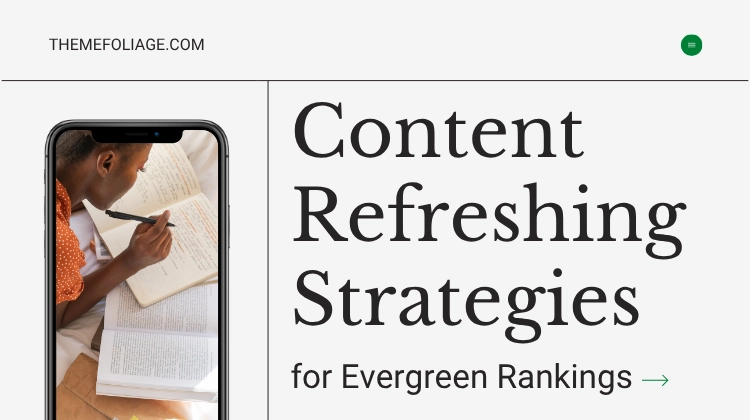In the fast-changing world of search, content decay is inevitable. Even the best-performing articles lose visibility over time as competitors update their pages and Google refines its algorithms.
That’s why content refreshing is now a crucial SEO strategy. In 2025, maintaining evergreen rankings means systematically updating your content to stay relevant, accurate, and valuable.
1. Why content refreshing matters
Google rewards freshness when it improves user experience. Outdated facts, broken links, and obsolete keywords signal neglect, which reduces trust and rankings. Regular content updates help you:
- Recover lost keyword positions.
- Improve CTR with updated titles and meta descriptions.
- Enhance topical authority and recency signals.
- Increase engagement by aligning with current search intent.
2. Identify which content needs updating
Not all content needs frequent updates. Focus on high-impact pages first, those that previously ranked well or attract significant organic traffic.
- Use Google Search Console to find declining pages.
- Check Google Analytics for traffic drops or low engagement.
- Audit keyword rankings using Ahrefs or Semrush.
- Sort content by age and performance to prioritise updates.
3. Refresh data, stats, and examples
Accuracy builds credibility. Replace outdated information with the latest industry data and sources.
- Update statistics, reports, and external references to the current year.
- Add new studies or authoritative quotes.
- Remove obsolete product references or expired links.
4. Improve readability and structure
Google’s algorithms evaluate content usability through engagement metrics. Make your articles easier to read and scan.
- Break long paragraphs into shorter sections.
- Add descriptive subheadings (H2s and H3s) for better structure.
- Use bullet points and numbered lists.
- Include visual content like infographics and tables.
5. Re-optimise for new keyword opportunities
Keyword trends evolve. Updating your keyword focus ensures your content stays aligned with what users actually search for in 2025.
- Use keyword tools to identify emerging long-tail phrases.
- Update headings, titles, and meta tags naturally.
- Add semantic keywords to strengthen topical relevance.
- Avoid over-optimisation, keep your content natural.
6. Add fresh insights and depth
Go beyond surface-level updates. Add new sections or expert commentary that enhances value.
- Include expert opinions or quotes from thought leaders.
- Add new case studies or success stories.
- Answer frequently asked questions related to the topic.
7. Check internal and external links
Link integrity plays a major role in SEO health. Ensure all links still work and are relevant.
- Replace broken external links with updated sources.
- Add new internal links to fresh articles on your website.
- Remove outdated references to discontinued tools or events.
8. Update visuals and multimedia
Visuals help sustain engagement. Refresh outdated screenshots, charts, or images to reflect current branding and UI trends.
- Replace old visuals with high-resolution, on-brand graphics.
- Optimise all images with descriptive alt text.
- Embed updated videos or interactive media when relevant.
9. Revise titles and meta descriptions
Your title and meta description affect click-through rate (CTR). Make them more compelling while staying accurate.
- Use the current year to show freshness (e.g., “2025 Guide”).
- Include primary and secondary keywords naturally.
- Keep meta descriptions under 160 characters.
- Test variations to find what improves CTR.
10. Update publish dates and repromote
Once your content is refreshed, change the publishing date to reflect the latest update. Then repromote it across your marketing channels.
- Update the “last modified” date on WordPress.
- Resubmit the page in Google Search Console for faster reindexing.
- Promote the refreshed post on social media, newsletters, and LinkedIn.
11. Measure the impact of your refresh
Track performance changes after updating your content to measure ROI.
- Monitor ranking improvements for target keywords.
- Compare organic traffic before and after the update.
- Evaluate engagement metrics such as bounce rate and dwell time.
12. Automate your content refresh workflow
To manage large-scale sites, automation tools can save time and ensure consistency.
- Use Google Sheets to maintain a refresh schedule.
- Integrate ContentKing or SurferSEO for real-time monitoring.
- Set reminders for annual or quarterly content reviews.
Conclusion
In 2025, content refreshing is not optional, it’s essential. Keeping your content accurate, engaging, and optimised ensures long-term organic visibility.
By following these content refreshing strategies, you’ll maintain evergreen rankings, attract repeat visitors, and future-proof your SEO success. You may also like to learn – Technical SEO Best Practices.



